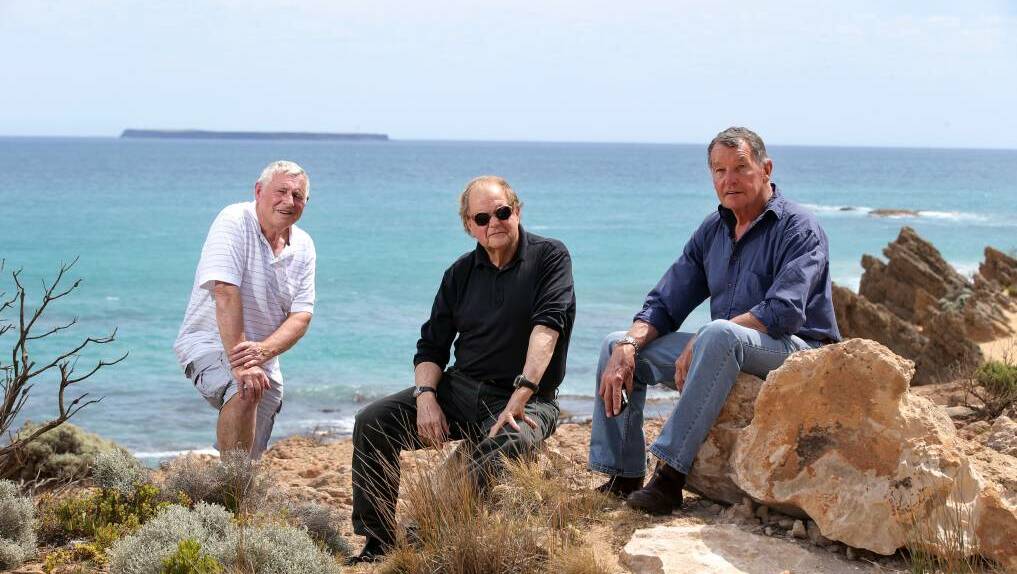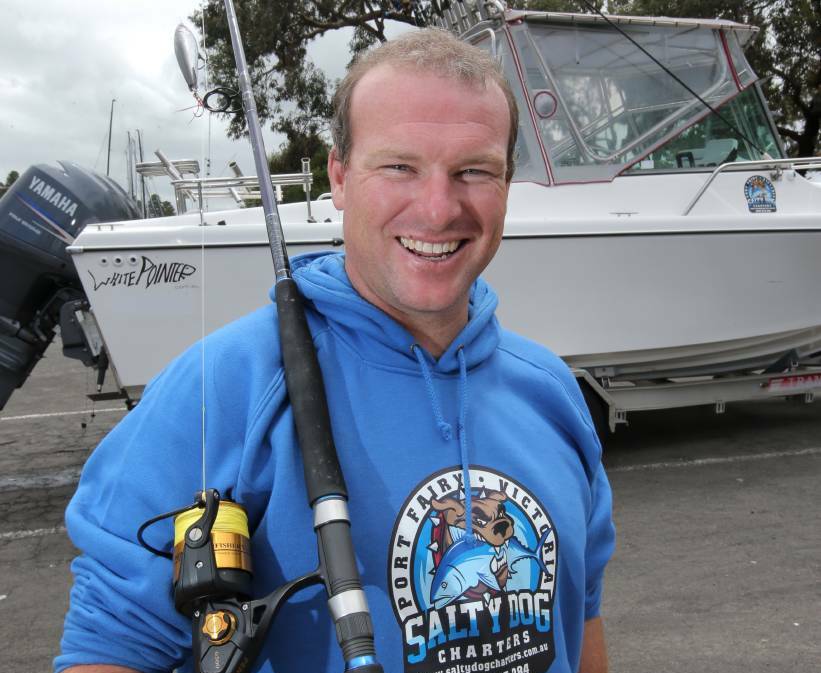The only time 86-year-old Ron (Basher) Blackney hasn’t enjoyed the ocean was March 18, 1961. That was the day he watched his mate Ken ‘Smithy’ Smith get attacked by a white pointer in Warrnambool’s Lady Bay.
Subscribe now for unlimited access.
$0/
(min cost $0)
or signup to continue reading
A keen swimmer and stalwart member of the Warrnambool Surf Lifesaving Club, Mr Blackney was at Warrnambool’s main beach the day the city was rocked by its one and only recorded shark attack.
“It was a white pointer, in the water out the front of the club house,” he recalls.
“It was about four o’clock. I came down for a swim with my three-year-old daughter and started to dig a hole for her to play in while I went in for a swim.
“Smithy came down all dressed up – he’d been at the Koroit races.
“I was helping a patient in the first aid room and Smithy was saying he wasn’t going for a swim because he had a sore leg.
“Next minute, charging down the beach comes Smithy with his togs”.
Mr Blackney and Mr Smith, both strong swimmers, were joined in the water by two other members of the surf lifesaving club, Les Hemingway and Tony Fitzgerald.
“Doc Hemingway and the chief instructor said they’d go for a swim too. They couldn’t swim as fast as us so Smithy and I mucked around out behind the break and we let them go. Then Smithy says to me ‘c’mon let’s catch this pair of so and sos’ and we took off.
“I turned to look at my daughter on the beach and Smithy got ahead of me.
The moments that follow have been etched in his memory ever since.
“Smithy was ahead of me and this white pointer came up and grabbed him straight in the back. I was still swimming until I heard this screaming.
“He was fighting it off and lost his thumb and I stopped swimming because I could hear this scream.
“I raced up the beach and yelled ‘get the boat out boys, something bad’s happened’.
“It was a typical white pointer. It drove him down, and he told me later, all he could feel was this great feeling of depth.
“Most of his back was shredded. We had people on the beach fainting. We had to get a towel on him pretty quick.”

Two yachtsmen, Alan Waterson and Alwyn Noseda, both from Koroit, were cruising their 3.3 metre moth class yacht in the bay and managed to drag Mr Smith on board and take him to shore where a waiting ambulance took him to Warrnambool’s Base Hospital.
“Smithy was still talking to me getting into the ambulance, saying his mum and dad were away on holidays in Bright and would I feed the dog and chooks for him. He was a tough young man.
“He survived, but he was badly mutilated.
“They closed the beach the next day. We had drum baits around the bay with morsels from the abattoirs on the hooks. We were trying to catch every shark within miles, but that shark was gone.
“I still think it followed a survey boat in.”
For some people, witnessing a shark attack would be a sufficient deterrent from ever re-entering the ocean but for Mr Blackney it was just another day in the sea.
“I swim in the ocean year round. The cold water never worried me,” he offers.

It was this unwavering love of the ocean that placed Mr Blackney in the international spotlight, when in 1956, Surf Lifesaving Australia (SLSA) held an exhibition event in Torquay to coincide with the Melbourne Olympics.
“It was November ‘56, when the Olympics were on.
“Geoff Stott, Jim Tibb, Wes Mclear, Stan Stevens and myself made up our crew.
“I remember they tried to make us wear these heavy flotation things (vests). They felt like they weighed a ton – we just chucked ‘em away.
“I tell you, you wouldn’t go without them today.
“The SLSA decided they should show the rest of the world all about surf lifesaving so off we went, and there wasn’t a single wave at Torquay, it was as flat as this floor, after huge crowds had come to see.
“That’s what happens at the sea.
“We’d train for hours but if the ocean didn’t give you any waves on the day there was nothing you could say about it.
“We even rowed to Port Fairy one day, that big old wooden thing, took us four hours over and three hours back.”
Despite success, international surf lifesaving never made it into the list of future Olympic events, but it did change the culture of surfing in Australia.
Hawaiian big wave surfers competing at the carnival showcased 9-foot Malibu chip boards coated in fibreglass replacing traditional 16-foot wooden boards that were hard to maneuver. The Americans were standing up to ride waves, and doing turns.
“We’d never seen boards like that before,” he recalls.
A new form of surfboard riding had come to Australia.
This was also the time Mr Blackney and his wife Pat went to Melbourne to watch the athletics at the 1956 Olympics.
“It was at the MCG, we’d got tickets from a ballot for the 29th and 30th November,” he recalls.
“It was exciting for us young people. It was a great opportunity to see the best performing in their sport.
“The stadium didn’t look anything like it does now.
“I remember the female Russian shot-putters, they were as big as a house.
“I remember the long-distance runners too, but I still wish we’d seen the basketball.”
This week marks not only 60 years since Melbourne hosted the Olympic Games but the advent of television in Victoria.
“I remember television had just been invented. It was only black and white back then.
“There was one shop in Geelong that had a television set and because of the games there were big crowds in town and they were gathering around watching the selected events.
“It was quite an original thing for people because nobody could afford a television.
“There was a rich bloke in Warrnambool who had one, right up top of the hill. He could get a good reception up there, he had enough money to buy one. Us blokes from the surf club would go up and see it.”
Originally from Ballarat, Mr Blackney moved to Warrnambool in 1935 and fell in love with the ocean and surf lifesaving.
This love has survived throughout the years. In 2009 at the world surf lifesaving titles at Lorne he retired after 40 years of service. He was Victoria’s longest-serving carnival official.
Now 86, he continues to patrol Warrnambool beaches for the love of it. Some habits are hard to break.


